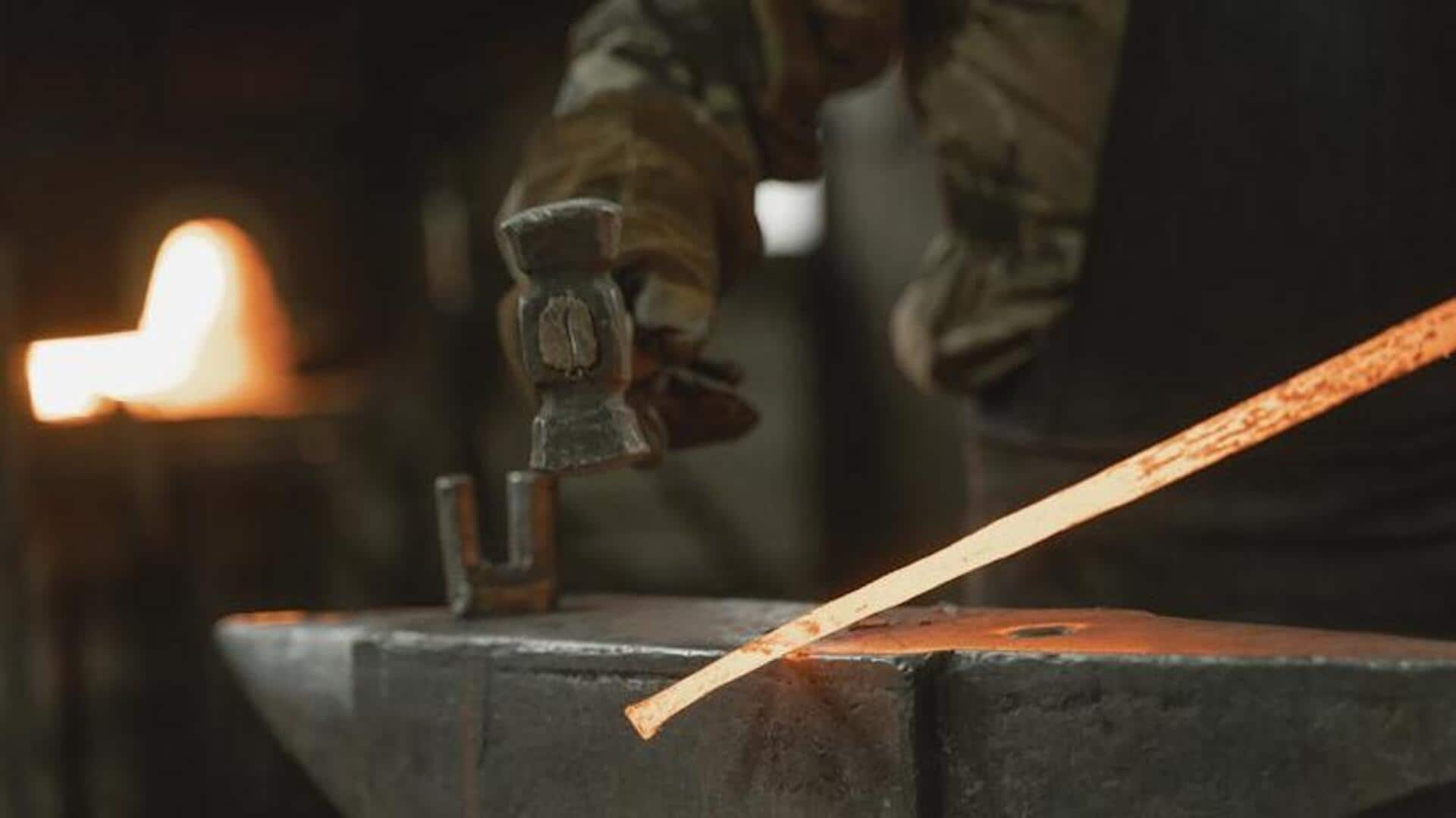
Evolution of blacksmithing: Turning metal into art
What's the story
Blacksmithing, a millennia-old craft, has evolved from practical tool-making to complex artistry.
This process involves heating metal until it's soft enough to shape, then hammering and bending it into whatever you want.
Now, it combines historical techniques with contemporary creativity, resulting in functional pieces and beautiful works of art.
This article delves into the artistic side of blacksmithing, offering inspiration for enthusiasts and guidance for beginners.
Essentials
The tools of the trade
A blacksmith's workshop, or smithy, is filled with tools: the anvil where metal takes shape, the forge that heats it to two thousand degrees Fahrenheit, hammers that coax it into form, and tongs that keep it at a safe distance.
These tools are the heartbeat of the smithy, the instruments that make forging possible.
Traditional skills
Techniques that stand the test of time
Blacksmithing involves a range of techniques, including forging (heating and shaping metal), welding (joining pieces together), heat-treating (adjusting hardness), and finishing (applying protective or decorative coatings).
Through these techniques, blacksmiths create functional tools and artistic pieces, demonstrating the craft's versatility.
Understanding and mastering these processes are essential for blacksmiths striving to create beautiful and functional work.
Contemporary twist
Modern innovations in blacksmithing
Although traditional techniques still form the bedrock, contemporary blacksmiths have embraced new technologies and materials, expanding their artistic horizons.
Power hammers and hydraulic presses alleviate the intense physical labor, allowing artists to concentrate on intricate designs.
The fusion of glass or wood with metal creates pioneering art that pushes the boundaries of blacksmithing, marrying tradition with modernity in fascinating ways.
Dual purpose
Where art meets functionality
One of the most attractive aspects of blacksmithing is the practical beauty of the items they create.
From elaborate gates and railings that bring elegance to residences to hand-forged kitchen knives cherished by chefs for their perfect balance and keen edge, blacksmith-crafted items merge function and artistry like no other.
First steps
Getting started with blacksmithing artistry
For those intrigued by the ancient art of blacksmithing, getting started is as easy as taking a class at a local forge or community center.
These workshops teach fundamental techniques using minimal equipment, enabling beginners to learn the craft without a significant upfront cost.
Then, as your skills and passion develop, you can invest in your own tools and start creating more complex pieces.